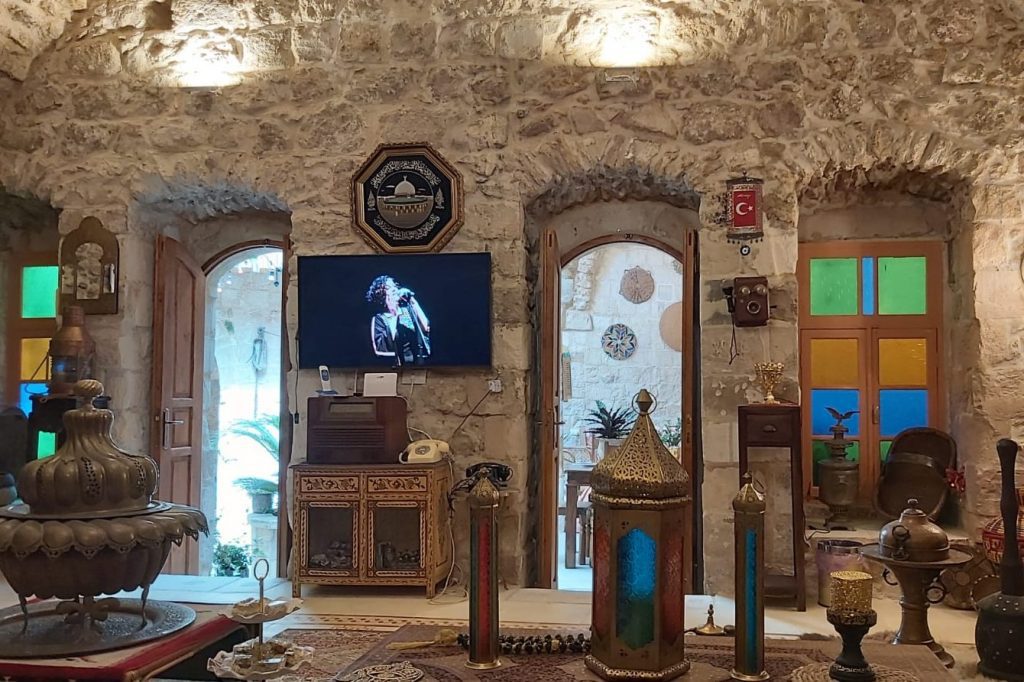Palestinian Art Center Shines Light to Revive West Bank Tourism

Skift Take
Living under the ongoing threat of regional unrest and economic uncertainty, residents of the Palestinian city of Jenin in the West Bank are turning to their unique cultural identity and taste for the arts to attract tourism and participate in a cultural exchange.
In this mainly agricultural city lies a hidden gem called the Jenin Creative Cultural Centre, which was launched in 2005 in response to Israel’s violent takeover of the Palestinian refugee camp at Jenin in 2002.
The violence at the time was part of Israel’s Operation Defensive Shield, the largest military operation in the West Bank since the 1967 six-day war between Israel, Egypt, Jordan, Syria, and Iraq.
“Today, the camp hosts the Freedom Theater, a symbol of the cultural resistance movement,” said Luisa Corra from Italy, who volunteered at the center to teach English, peace-fostering, and team-building activities.
Jenin is home to more than 250,000 residents and is located in the heart of the West Bank, which has often been the focal point of unrest between Palestinians and Israeli settlers. It's part of the draw that attracted 1.7 million inbound tourists to the West Bank in first half of 2019, according to the latest data available.
“Before visiting Palestine, I had some preconceived notions regarding the safety level. I was worried it could be a dangerous place to go,” she added. “I overcame them by looking into it and asking around to people who had traveled there before, and I felt reassured.”
Jenin today has evolved into a cultural hub, where activities are fostered among the hospitable locals to encourage creativity and development at a time of ongoing unrest.
“Palestinians love music and art, through which they can express their identity and history. Oud is a typical musical instrument they play,” Corra told Skift.
“I was also very impressed by the Palestinians' hospitality. They are very welcoming and friendly people who always offer you some coffee or tea to drink, invite you to their homes, and make you try their traditional food.”
Jenin’s cultural identity has become closely tied to that of the center, which prides itself in being open to people of all faiths and cultures. The center sometimes functions as a theater, dance school, or music venue. It even serves as a cozy hostel, in which volunteers like Corra choose to stay.
“Palestine is home to many touristic, historic, and holy sites that are important to all world religions. This is what makes it so attractive for global tourists, despite the difficult circumstances that the region is experiencing,” said Yousef Awad, director of International Relations at the Jenin Governorate and co-founder of the cultural center.
With peace and justice in mind, the center encourages Palestinian youth to express their creativity as they cope with the sometimes harsh and hindering realities of life in the Occupied Palestinian Territories. In recent years, the center hosted the Jenin Autism Project since the city doesn’t have much infrastructure to support youth or community initiatives.
Awad, who has been director of the center for 15 years, told Skift that he’s witnessed a new type of “politically conscious” tourism emerge while living and working in Jenin over recent years.
“We’ve seen many tourists from around the world visit out of solidarity to Palestine to support its tourism sector and therefore its economy,” he said, adding that tourism plays an important role in supporting the Palestinian economy.
One of the center’s main goals is to attract much-needed tourism relief to Jenin and other Palestinian territories, such as the neighboring city of Nablus — an hour's drive from Jenin.
Nablus is famous for its busy and bustling markets, organic olive oil products, and mouthwatering sweet Arabic pastries such as kanafeh and baklava.
Beauty hidden in the name
Since its debut in 2005, the Jenin Creative Cultural Center has emerged as a bright spot for the landlocked West Bank territory, which is bordered by Jordan in the east and the Green Line separating it from Israel to the south.
The name Jenin is derived from the biblical name Ein Ganim and means the “Garden Springs.” The lush, green city is famous for Marj Ibn Amer, a valley rich with plains of fertile soil.
Awad said Jenin collaborates yearly with the Palestinian Ministry of Tourism to host the Marj Ibn Amer festival to bring together regional and local artists, as well as lively performances of the traditional dabke dance.
“It is our role to preserve our Palestinian culture and history, from music, dances, and even our different dialects of Arabic,” said Awad.
The role of tourism is equally important to Israel and Palestine. According to the Israeli Ministry of Tourism, 45 percent of foreign visitors in 2017 went to the Dead Sea, much of which lies is in the Occupied Palestinian Territories.
Awad said the Dead Sea is one of the top destinations, as it attracts visitors seeking healing and relaxation from the sea’s salt minerals and overall therapeutic atmosphere.
Holy sites and destinations
Among the most-visited Palestinian territories is Israel-annexed Eastern Jerusalem, known for the Temple Mount, the Al-Aqsa Mosque, Dome of the Rock, and the Church of the Holy Sepulcher — holy sites of importance to Muslims, Jews, and Christians.
Bethlehem and the Jerusalem governorates are also top destinations because of their spiritual significance for people from across the Abrahamic faiths.

The view between the two windows is the view from the Jenin Refugee Camp. The fields of Marj ibn Amer and also Nazareth are in the distance. Source: Yousef Awad
According to the Palestinian Central Bureau of Statistics, the West Bank saw a movement of 1.72 million inbound visitors during the first half of 2019, up 17 percent from the same period of 2018, and 23 percent compared to the first half of 2017.
By governorate, Bethlehem got the highest percentage of inbound visits at 38 percent, followed by Jericho and Al-Aghwar governorates with 35 percent, Jenin and Nablus governorates at 10 percent, respectively, and 7 percent for other governorates.
Just five kilometers outside of Jenin is the village of Burgin, home of the Saint George Church, which belongs to the Greek Orthodox community. The church has been linked to the biblical story of the 10 lepers mentioned in the New Testament in Christian tradition.
It is said to be the village where Christ passed through on his way to Galilee and miraculously healed 10 lepers who asked for his help.
“This area is rich in every sense of the word: culturally, religiously, and visually due to its lush and green scenic beauty. This is why the lepers were said to have been cured there by Jesus,” Awad said, with much conviction.
— Reem Abdellatif is a Skift contributor based in Dubai.




